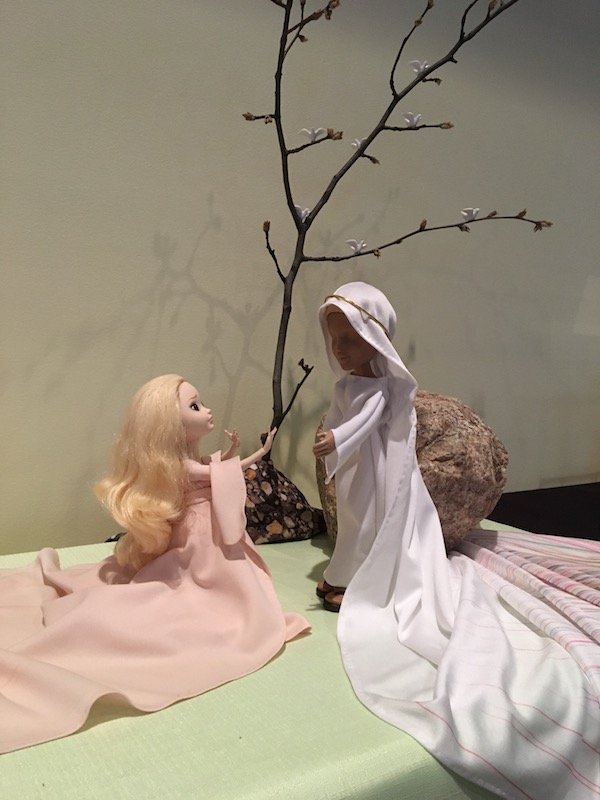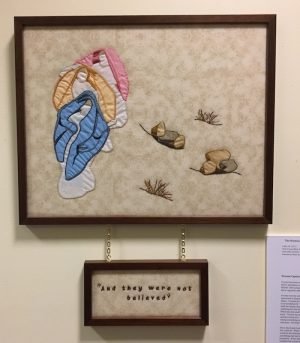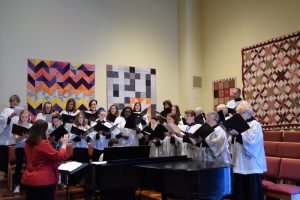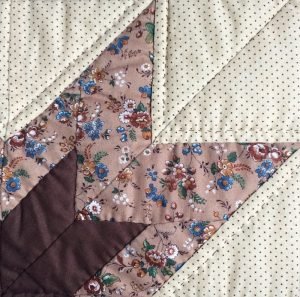
Arts & Spirituality
Examining our personal faith through creativity and creation.
“Art is part of the quest for wholeness—and our ability to forgo perfection for wholeness allows the Spirit to move, and breathe, and be a part of our very being.”
Arts and creativity are vital parts of our spiritual journey. If you’ve heard the expression “enjoy the journey” or “the journey is as important as the destination” then you know a bit more of what this group is about than perhaps you thought. There are many people at Church of the Holy Spirit who pursue arts—quilters, painters, writers, weavers, poets, textile designers, woodworkers, metalworkers, and more. In the joining of thought, prayer, and purpose to create an end result we focus and express what we feel in our hearts. Sometimes it is easy but many times it is not; yet in the struggle we discover clarity and the ability to share our faith with others.
“The desire to express one’s self creatively is, I believe, a function of God’s image in humankind. It is a joy to be in a church that encourages its members to be creative.”
We uplift the artistic gifts through workshops, exhibits, skills sharing, retreats, and field trips. To take the time and put forth the effort to participate in Arts and Spirituality is to take part in the active, creative ministry of this church. We welcome everyone, including all ages, all media, and all skill levels, to venture into the creative processes where spiritual learning occurs.






Labyrinth
Church of the Holy Spirit has a permanent outdoor labyrinth, immediately adjacent to the church building. It is used for prayers, meditations and workshops on a regular basis. It is available for anyone to walk, at any time as a part of their spiritual journey.
What is a labyrinth?
A labyrinth is an ancient symbol that relates to wholeness. It combines the imagery of the circle and the spiral into a meandering but purposeful path. The labyrinth is a metaphor for the journey to the center of your deepest self and back out into the world with a broadened understanding of who you are.
The labyrinth is an ancient spiritual tool, a walking meditation, a path of prayer. Walking the labyrinth can reduce stress, quiet the mind, open the heart, and bring one closer to God. People walk the labyrinth to heal, to be enriched in the spiritual life, seeking peace, seeking insight. The labyrinth can be a transformational tool, opening us to change in our spirit, in our minds, seeking insight.
Labyrinths have been a part of human spirituality for over 4,000 years. The oldest form on record is the Cretan labyrinth, also called the classical seven circuit labyrinth. Labyrinths are made of many materials. Some of the paths are outlined in stone, others are carved into stone. Early Roman-style labyrinths usually were made of mosaic tile. Turf labyrinths, found throughout England, Scandinavia, and Germany, are made from mounds of earth covered with grass.
The most famous labyrinth remaining from the Middle Ages is at Chartres Cathedral located near Paris. Built around 1 200 A.D., the Chartres labyrinth was meant to be walked as a pilgrimage or for repentance. As a pilgrimage it was a quest to become closer to God and would serve as a substitute tor a pilgrimage to the Holy Land. The labyrinth at the Church of the Holy Spirit is modeled after the Chartres labyrinth. It is painted on the Church’s patio and is available for use, weather permitting, at any time.
In the English language the words “labyrinth” and “maze” are incorrectly used interchangeably. A maze has twists, turns, and dead ends. A labyrinth has only one path. The way in is the way out. There are no dead ends. The path leads you on a circuitous path to the center and out again.
Why do people walk labyrinths?
to relax and feel at peace
to let go of their worries and concerns
to cope with grief and loss
for insight on special problems
for healing of relationships
to open the flow of creativity tor vocational discernment
for forgiveness
to express thanksgiving to Gad for the birth of a new child, recovery from illness, a new beginning, friends or the beauty of the earth
before an operation, marriage, ordination, dealing with a difficult situation or at the time of the death of a close friend
Basic approaches to walking the labyrinth
There are as many ways to walk it as there are walkers, but here are some suggestions.
Be in the Moment: quiet your mind, let go of doing and be, allow thoughts to go away and be still in mind.
Ask a Question: Prior to walking, journal your thoughts or share what you are looking tor with another person (they might help you to form your unspoken question). During the walk look at your question from all aspects; walking allows your own consciousness to open so deeper aspects of yourself can speak.
Use Repetition: a mantra phrase, centering prayer, non-distracting word, affirmation sentence.
Read & Reflect On Scripture: a psalm or other inspiring material.
Ask for Help Through Prayer: pray as you walk.
Honor a Benchmark in Your Life or That of Another: a memorial act, a celebratory act, a penitence act, an intercessory act, etc.
Make a Body Prayer: move spontaneously as encouraged by the path, feel safe in its containment, sense kinetic awareness.
Use Accessories: wear a colored scarf as symbolic of something for you; carry an object of significance to you (votive candle, flower, stone, etc.) Whatever you carry in should be carried out as well.
Stages of the walk
Purgation (Releasing):
As you walk into the labyrinth, let go of the details of your life, shedding distractions.
Illumination (Receiving):
As you reach the center, open your heart and mind to receive what is there tor you to receive, stay as long as seems right tor you.
Union (Returning):
As you leave the center, following the same path out, there may be a strange sense of strengthening and clarity. You become more empowered to find and do the work you feel your soul reaching to do.
You only have to enter and follow the path. However, your walk can encompass a variety of attitudes. It may be joyous or somber. It might be thoughtful or prayerful. You may use it as a walking meditation.
When you walk a labyrinth choose your attitude. From time to time choose a different attitude. Make it serious, prayerful, or playful. Play music or sing.Pray out loud. Walk alone and with a crowd. Notice the sky. Listen to the sounds. Most of all pay attention to your experience.
Guidelines
Maintain silence tor your reflection and that of others
Take some time before you walk to clear your mind and become aware of your breathing.
Allow your body to find its own pace. The path is two ways; those going in will meet those coming out. You may “pass” people or let them step around you, this is easiest at turns.
Be aware of your process and feelings and know that you are sharing this with others. Remember, all things on your walk will instruct. Your walk is uniquely yours.
Do what feels natural. There is no ”right” or “wrong” way to walk the labyrinth.
Take time after your walk to reflect and meditate. Repeat.

